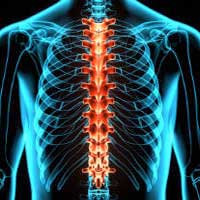| Sep 28, 2020 |
|
(Nanowerk News) A new study conducted by SISSA and the University of Trieste shows the efficacy of carbon nanotube implants to restore motor functions and paves the way for a new therapeutic approach for spinal cord injuries.
|
|
Re-establishing motor skills and neuronal connectivity thanks to the implantation of carbon nanotubes in the injury site. This is the result of a new study conducted by SISSA – Scuola Internazionale Superiore di Studi Avanzati and the University of Trieste that rewards a ten years interdisciplinary collaboration. For the first time, the researchers have used nanomaterial implants in animals with spinal injury, observing the regrowth of nerve fibres and the restoration of motor functions.
|
|
The research, published in PNAS (“Functional rewiring across spinal injuries via biomimetic nanofiber scaffolds”), shows the potential of therapeutic approaches that use the mechanical and electric properties of regenerative scaffolds to treat the injured area.
|
|
“We have been studying the interaction between neurons and carbon nanotubes for 15 years. Finally, we have been able to challenge their function in vivo”, say Laura Ballerini, neurophysiologist at SISSA, and Maurizio Prato, chemist at the University of Trieste, who have been investigating nerve cell growth when interfaced to smart materials, such as carbon nanotubes in the last decade, using increasingly complex systems. “In recent years, we passed from single neurons to brain tissue explants and from single nanotubes to two-dimensional structures and, now, three dimensional ones.”
|
|
“We studied the effect of the carbon nanotube implant in small mammals with a disease model of incomplete spinal cord injury,” explains Sadaf Usmani, PhD in neurobiology and lead author of the study. “We observed their motor recovery during the next six months through standard protocols for locomotor evaluation which revealed a greater recovery of motor skills when compared to non-implanted animals”.
|
|
This phenomenon is associated with nerve fibre regrowth through the injury site, as shown by the magnetic resonance experiments carried out in collaboration with the Center for Cooperative Research in Biomaterials (CIC biomaGUNE). A regrowth that is certainly favoured by nanotube implantation, explain Ballerini and Prato.
|
|
“Nerve fibre regeneration is promoted by the physical characteristics of nanomaterials. These implants are able to guarantee mechanical support and, at the same time, interact electrically with neurons.”
|
|
“The functionality of the regenerated tissue was not taken for granted, just as the biocompatibility of the implants” continue the researchers “And yet, not only there have been no cases of rejection, but electron microscope observations and the use of specific markers have confirmed that there is no real boundary between the tissue surrounding the injury, the regenerated tissue and the nanomaterials.”
|
|
These results not only confirm the possible applications of the nanomaterials in the biomedical sector but also pave the way to new therapeutic approaches which use the physical, mechanical and electrical properties in particular, of the injured zone to favour functional recovery.
|
